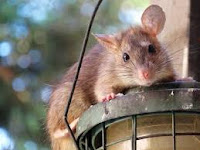The spread of rats in large cities: a threat to public health and the environment
Rats are a common sight in many cities around the world, and their numbers appear to be increasing. In fact, some experts estimate that there are now more rats than people in some of the world's largest cities. The increase in the rat population is of serious concern to both health professionals and ecologists.
Why is the population of rats growing in cities?
There are a number of factors that contribute to the increase in rat populations in cities. One factor is the abundance of food sources. Rats are omnivores and will eat almost anything, including garbage, food scraps, and pet food. Cities offer rats a wide variety of food that allows them to thrive.
Another factor contributing to the reproduction of rats is the availability of shelter. Rats perfectly find shelter in buildings, sewers and other artificial structures. This provides them with protection from predators and the elements, which helps them survive and reproduce.
What is the threat of a large population of rats in the city?
Rats can pose a serious threat to public health. They can carry diseases that can be transmitted to humans, such as hantavirus, salmonellosis and leptospirosis. Rats can also damage property by gnawing on wires and pipes and contribute to fires by gnawing on electrical wiring.
In addition to being a health and safety hazard, rats can also have a negative impact on the environment. They may compete with local wildlife for food and resources, and may prey on small animals such as birds and eggs.
What can be done to control rat populations in cities?
There are many things that can be done to control rat populations in cities. An important step is to eliminate food sources for rats. This means proper disposal of trash, food scraps, and pet food. It is also important to cover cracks and holes in buildings and other structures to prevent rats from entering.
In addition to these preventive measures, there are a number of effective methods of destroying rats. How to get rid of rats. These include traps, poisons and rodenticides.
The role of ecologists in the fight against rats
Ecologists can play an important role in rat control by helping to identify and understand the factors that contribute to rat populations. They can also develop and implement effective rat control strategies that are safe for both humans and the environment.




Comments
Post a Comment